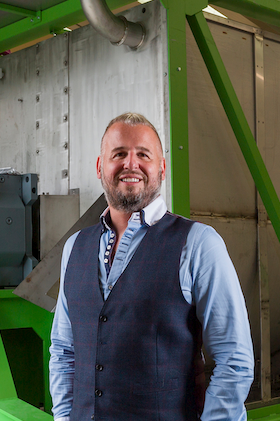
While you may have heard of fast fashion, you might be surprised to learn that fast furniture is an emerging development. The furniture market is expected to reach a revenue of around £18.16 billion in the UK according to Statista Market Insights, however the contribution of furniture to bulky waste is evident, with data showing it covers around 42% of it, equating to around 670,000 tonnes.
Scott Hawthorne from Skips & Bins, leading providers of commercial waste disposal in the UK, has seen firsthand the impact that fast furniture has on the waste disposal and management industry. He’s provided some expert insight into what it is, its impact, and what to look for as a substitute.

What is fast furniture?
Fast furniture follows similar production methods as fast fashion, which relies on producing pieces made with cheaper materials designed for quicker production in larger quantities. This results in faster wear over shorter periods and requires throwing away and replacing more frequently than higher-quality furniture.
It’s designed and produced to be more in tune with emerging trends and décor styles without shoppers having to spend big to keep up with the latest interior concepts. This translates to mass-manufactured pieces made typically by machines rather than a smaller stock of quality and unique pieces.
How it contributes to throwaway culture
Fast furniture can show signs of wear after only a few months of use, leading to having to replace it with a new piece. While fast furniture can be a useful temporary solution when you’re looking for a high-quality new addition to your home and décor, it can be difficult to find a piece that will likely be a permanent fixture in your home.
Not only does this have a huge impact on homemakers’ budgets, as they have to account for buying new furniture and the contributions to landfills, but the cheap materials they’re made with can often contain harmful byproducts. Once they begin to degrade, the resins, foams, and dyes can’t be effectively recycled, meaning that they can have a significant impact on the environment.
Scott Hawthorne has voiced his concerns around fast furniture and its impact on waste management companies: “A vast majority of fast products, be it fashion or furniture, often come with planned obsolescence, where the materials wear down much faster and require total replacement rather than repair. All of this ends up in landfills or waste management centres, and the data of how much there is can be hugely overwhelming.
“Plus, it’s not just the immediate impact on the environment from the materials that are a concern. Consider the amount of greenhouse gases emitted when delivering a piece of furniture or even just shipping it to a shop floor and stockroom. Now multiply that for every piece of fast furniture made in a year, and you start to see the horrifying wider implications.”

Sustainable and recyclable furniture is the future
So, what is the solution to not spending on fast furniture pieces? Well, if you’re looking to substitute sheerly based on cost, auction houses, charity shops, or marketplaces can be a fantastic way to find cheaper pieces for your home. While they might need a bit of TLC to make them presentable, whether through upholstering or repainting, you can also find timeless pieces that’ll naturally fit in without any adjustments beyond some quick cleaning.
Shopping for timeless rather than trendy is one important factor in reducing the prevalence of fast furniture. Choosing pieces that are tried and tested, like a classic wardrobe with an inoffensive trim, and not picking something based on how popular it currently is on social media will lead to it becoming a mainstay from your own tastes rather than someone else’s.
In many cases, when buying new, buying from an established brand often means you’re buying products that are built to last, thus eliminating the need for constantly replacing items in your home. For those who are more conscious of where they’re purchasing their furniture from and how sustainable it is, doing the right amount of research into what materials are used and the brands’ environmental, social, and governance (ESG) policies and strategies can help make an informed decision.
Fore more information: (https://www.skipsandbins.com/commercial-waste-collection)
Sources
https://www.statista.com/outlook/cmo/furniture/united-kingdom?currency=GBP
https://wrap.org.uk/sites/default/files/2020-09/WRAP-Furniture%20-%20bulky%20waste%20summary.pdf

